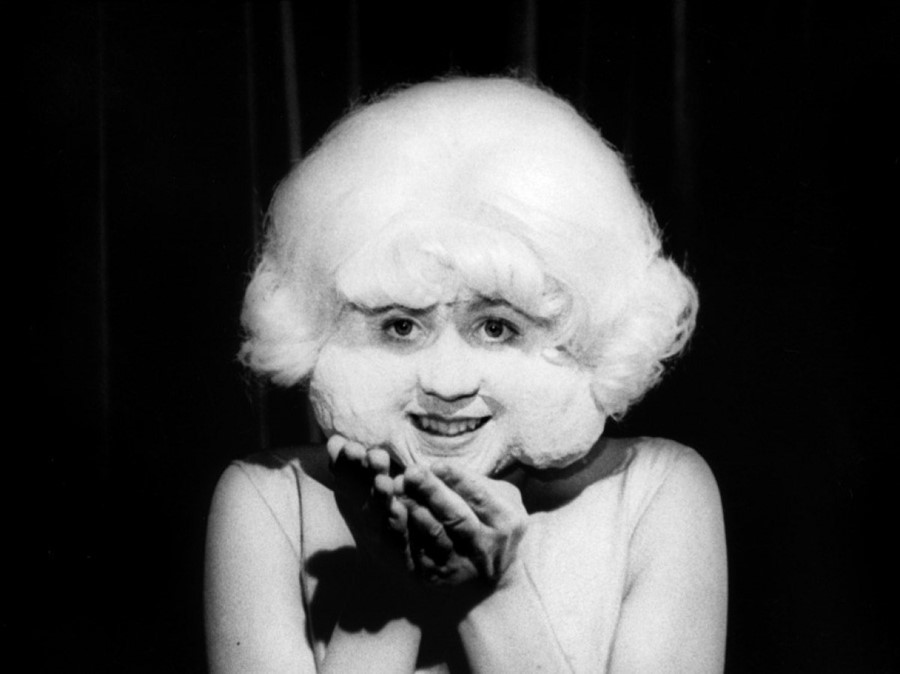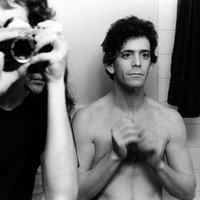As David Lynch’s first feature film celebrates its 40th anniversary, we look at how its uniquely disturbing approach to sound inspired a generation of musicians
For all of Eraserhead’s uniquely disturbing images – the mummified baby, the menstruating chicken – it’s perhaps its ominous soundtrack that’s resonated most strongly over the past four decades. The film’s uneasy atmosphere was built by director David Lynch and sound designer Alan Splet, who together combined low, rumbling bass frequencies, screeching industrial noise, and ghostly echoes of pop music’s past to create a sound world that had never been heard in cinema before. Eraserhead’s soundtrack went on to change not just the way that filmmakers treat sound, but the wider world of music more broadly over the following decades, and as the film celebrates its 40th anniversary, we looked back at some of the ways that Lynch created the most ambitious and unique soundtrack of his career.
THE SOUND OF HEAVY INDUSTRY
Eraserhead’s foreboding mood was inspired by Philadelphia’s post-industrial history. Lynch lived in the city while studying painting at the Pennsylvania Academy of the Fine Arts in the late 1960s, and was equally fascinated and repulsed by its decaying architecture and abandoned warehouses, describing the city as both “a very sick, twisted, violent, fear-ridden, decadent, decaying place” and as “beautiful, if you see it the right way.” Eraserhead’s soundtrack, in turn, reflected this environment: instead of commissioning a composer to score the film traditionally, Lynch worked with sound designer Alan Splet to create something more unusual, evoking the sounds of heavy machinery while imbuing the whole thing with a rusted, deteriorating quality.
Though this abstract noise dominates the film, there are plenty of physical and organic sounds too – but these are no less unpleasant. When Henry Spencer (played by Jack Nance) meets Mary X (Charlotte Stewart)’s parents for dinner, a slow, suckling sound plays in the background. It’s revealed to be some feeding newborn puppies, but the sound continues restlessly beneath Henry’s conversation, cultivating an air of dread and anxiety that sets the viewer on edge.
CREATIVE ENGINEERING
Hollywood sound designers have always found ingenious ways to create noises that don’t otherwise exist – in Star Wars, for example, Chewbacca’s alien speech was famously made by layering and manipulating recordings of animals like bears and walruses – but Philadelphia isn’t Hollywood, and Lynch and Splet didn’t have access to a state-of-the-art studio to work on Eraserhead’s soundtrack. “(We had) hardly any sophisticated equipment, but we had everything we needed,” Lynch has since put it. Still, the soundtrack is a marvel of DIY creativity, with Lynch and Splet crafting almost every sound used in the final film from scratch – often using quite bizarre methods. The ambience of the love scene, for example, was made by recording air blown through a microphone as it sat inside a plastic bottle, floating in a bathtub. “I was moving the bottle around in the tub like this, and it would make like a little ringing, very subtle, a dreamy ringing, and this air moving in there had a tone to it, and it would change as it moved around,” Lynch said. “It’s the greatest sort of ethereal sound.”
There were precedents for what Lynch and Splet were doing – composers like John Cage had incorporated environmental sounds into their music, while Lynch and Splet’s method of re-pitching and re-editing their recorded sounds recalls the techniques of musique concrète. And throughout the 1970s, avant-garde musicians were beginning to solidify ‘ambient music’ as a genre in itself (a year after Eraserhead’s release, Brian Eno would popularise these ideas with the album Ambient 1: Music for Airports, created by layering tape loops together). But whether Lynch or Splet were aware of any of this at the time is unclear. According to Lynch, Splet spent most of his time listening to classical music rather than rock’n’roll, but he approached Eraserhead with an interest in electronics in mind. “He was a creative engineer,” as Lynch described him.
A HARD-WORKING FRIEND
Speaking of Splet, it’s hard to imagine what David Lynch’s films might have sounded like had they not met in 1970. The two began working together on Lynch’s debut short film The Grandmother that year, but their creative partnership endured throughout the 1970s and 80s, with Splet working as the sound designer on The Elephant Man, Dune, and Blue Velvet. Sadly, Splet died of cancer in 1994 at the age of 54, but the ideas established in Eraserhead would stay with Lynch in the future. “I loved Alan, you know, he was one of my best friends,” Lynch told Chris Rodley in his book Lynch On Lynch. “It was just fun working on sounds with Al, because he was so enthusiastic – such a gifted, hard-working friend.”
‘Hard-working’ is maybe an understatement – for “nine hours a day, for 63 days”, Lynch and Splet would work on Eraserhead’s soundtrack. It’s easy to see why Lynch and Splet got on so well – like Lynch, Splet’s creative sensibility matched the intuitive with the material. When he was asked why he used the slowed-down sound of a squeaking cable to create a roar on Dune, for example, Splet replied: “It just came to me. There’s a point where you can talk about things logically and then, after that, you have to leave the world of logic. I don’t know where a lot of these ideas come from. They just do.”
INSPIRATIONS AND COVERS
Eraserhead blurs the line between film score and sound design, so it’s fitting that its biggest impact should be felt in ‘non-music’ subgenres like noise, drone, and dark ambient. Artists from industrial pioneers Cabaret Voltaire and Einstürzende Neubauten to modern ambient composers like Tim Hecker have either consciously or unconsciously built on the film’s audio techniques. Elsewhere, the way that Lynch deploys the spectral, heavily reverberated organ music of jazz pianist Fats Waller throughout the film feels like a precursor to the ‘hauntological’ music of The Caretaker’s Leyland Kirby, whose albums are tributes to the Haunted Ballroom scene of Stanley Kubrick’s The Shining. (According to Twin Peaks editor Duwayne Dunham, Kubrick was obsessed with Eraserhead – it’s perhaps fitting that he’d have used similar techniques in The Shining.)
But perhaps the most straightforward impact that the film has had on pop music can be seen in the myriad cover versions of The Lady in the Radiator’s “In Heaven” that exist. The song is the only straightforward piece of music in Eraserhead, and testament to its strength, it’s since been covered by the likes of the Pixies and Zola Jesus.
INFLUENCING LYNCH’S LATER FILMS
By the 1990s, Lynch was remarking that “I used to like darkness and low-frequency sounds, and now I tend to go for lighter things and high-frequency sounds.” Yet while his soundtracks became progressively more straightforward over the years (well, comparatively more straightforward anyway) thanks in no small part to his work with Angelo Badalamenti, the ideas that he explored on Eraserhead were audible long after Alan Splet’s death. Take the unsettling ‘presences’, or ‘room tones’, that intrude into otherwise domestic situations in films like Twin Peaks – Fire Walk With Me or Mulholland Drive, or the electrical noises that correspond with shifts in reality in Lost Highway.
The moment that Lynch came closest to recreating the sound experiments of Eraserhead, was perhaps 1990’s Industrial Symphony No. 1, an avant-garde opera starring Wild at Heart’s Nicolas Cage and Laura Dern as well as many cast members of Twin Peaks. The show is a fusion of the industrial cacophony of Eraserhead with the ethereal compositions made with Angelo Badalamenti and Julee Cruise, bringing together Lynch’s audio obsessions into one particularly unusual piece.




